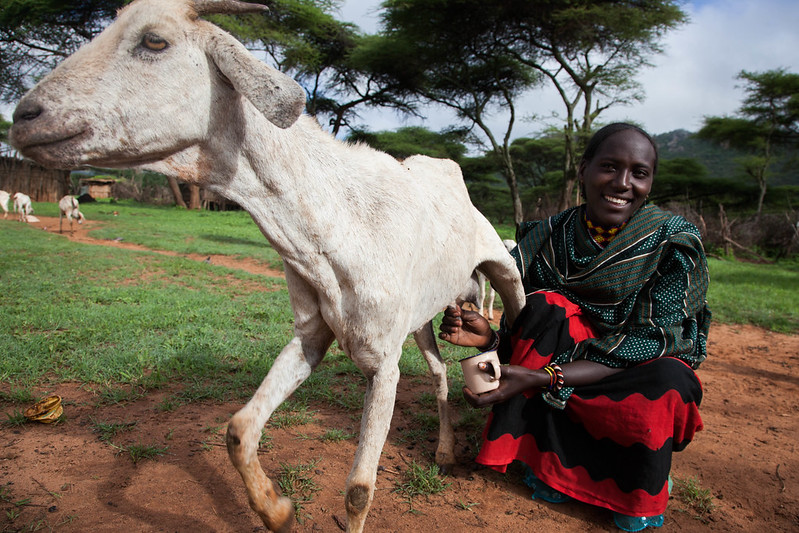
New strategy aims to unlock Ethiopia's dairy potential
Ethiopia’s dairy sector boasts vast and diverse agroecologies complemented by a rich genetic pool of livestock. This, coupled with the surge in domestic demand for milk and milk products, improved market opportunities and accessibility to international markets, makes it an industry with great potential.
However, this promising landscape is not without its challenges. Obstacles range from production-specific constraints like genotype issues, feed resource limitations and inefficient feeding systems to systemic problems such as poor infrastructure, an ineffective marketing system and insufficient policy support. Further, the sector has to contend with low technology adoption, weak regulatory systems and financial constraints that have collectively impeded its growth.
The ambitious livestock masterplan, designed to catapult national cow milk production during the Growth and Transformation Plan II period (2015–2020), fell short due to incomplete implementation. The daily average milk yield remains below expectations, with the total annual milk production estimated at 7.1 billion litres in 2022, only a fraction of the recommended per capita annual milk consumption of 200 litres according to the World Health Organization (WHO). To remedy this shortfall, Ethiopia had to import more than 19.43 million litres of dairy products between 2009 and 2018, at a cost of over 2.23 billion birr (USD 38.9 million).

In response to these challenges, the Ethiopian Ministry of Agriculture, in collaboration with the International Livestock Research Institute (ILRI) and other partners unveiled the National Dairy Development Strategy (NDDS) on 19 December 2023. This visionary plan sets the stage for a revolutionary transformation of the dairy sector over the next decade.
The NDDS is not merely a policy document; it is a roadmap aiming to unlock the full potential of Ethiopia's dairy sector. Among the ambitious goals outlined for 2031 in this strategy are:
- A fourfold increase in milk production;
- Achievement of WHO-recommended per capita milk consumption levels;
- Tailored development programs for diverse production systems:
- Improved commercialization;
- Enhanced product quality and safety;
- A substantial reduction in environmental concerns through increased productivity and efficiency.
The NDDS is structured around four main objectives addressing critical aspects of the dairy value chain:
- Increase milk production and productivity by enhancing animal genetics, feed resources, animal health, and husbandry practice
- Enhance milk quality and safety by strengthening milk collection, cooling and testing systems while enforcing quality standards and regulations;
- Expand milk processing, and marketing by promoting value addition, diversification, and innovation, along with improving market infrastructure and linkages;
- Improve the enabling environment for dairy development by enhancing institutional capacity, coordination, policy support, and investment.

The Government of Ethiopia aims to increase total milk production from cattle, camel, and goats from 7.1 billion litres in 2021 to 28.4 billion litres in 2031. The total milk production from indigenous cows will be 13.5 billion litres, camels 8.7 billion litres, crossbred cows 5.8 billion litres, goats 326 million litres, and exotic cows to 314 million litres.
With the NDDS providing implementation guidelines, the government targets 17 per cent annual growth in milk production through the right genetics, application of biotechnological tools, and proper management interventions. The strategy underscores the importance of continuous monitoring, evaluation and adaptation to emerging challenges for successful implementation.
The NDDS aligns with global sustainability goals and positions the Ethiopian dairy sector as a crucial element in achieving food and nutrition security, poverty reduction, economic growth, and environmental sustainability. It not only guides implementation of the 10-year perspective plan but also associated initiatives, including the Ten-in-Ten development initiatives and ‘Yelemat Tirufat’ bounty basket targeting transformation of the Ethiopian dairy sector.
As Ethiopia sets its sights on achieving self-sufficiency in dairy production, the NDDS stands as a transformative strategy, promoting collaborative effort. It paves the way for a dairy revolution that promises to uplift communities, enhance livelihoods and contribute significantly to broader national and global development objectives.
You may also like

ILRI News
ILRI signs agreements with seven universities to collaborate on practical innovations for Ethiopia’s dairy sector

HABITAT- Farmer workshops on biodiversity and pasture biodiversity assessment on highland dairy farms

ILRI News
The Africa Asia Dairy Genetic Gains project launches mobile app to track dairy animal performance
Related Publications

Prevalence of Listeria monocytogenes and Listeria species and associated risk factors for contamination of milk and cottage cheese along the value chains in Ethiopia
- Hassen, A.
- Keba, Abdi
- Ebrai, M.S.
- Mamo, H.
- Geleta, T.K.
- Tessema, T.S.
- Vipham, J.
- Kovac, J.
- Zewdu, A.

The impact of training intervention on levels of indicator bacteria and prevalence of selected pathogens in raw milk from smallholder women dairy farmers in Central Ethiopia
- Beyene, A.M.
- Nigatu, S.
- Archila-Godinez, J.C.
- Amenu, Kebede
- Kowalcyk, B.
- Degefaw, D.
- Mogess, B.
- Gelaw, B.
- Gizachew, M.
- Mengistu, A.
- Abdelhamid, A.G.
- Barkley, J.
- Yousef, A.

Moving milk and shifting risk: A mixed methods assessment of food safety risks along informal dairy value chains in Kisumu, Kenya
- Smith, L.C.
- Stringer, A.
- Owuor, K.O.
- Ndenga, B.A.
- Winter, C.
- Gerken, Keli N.

Shared dairy manager extension approach: A successful research trial in Kenya's dairy sector
- Rao, E.J.O.
- Kimani, Judy
- Githinji, Julius













